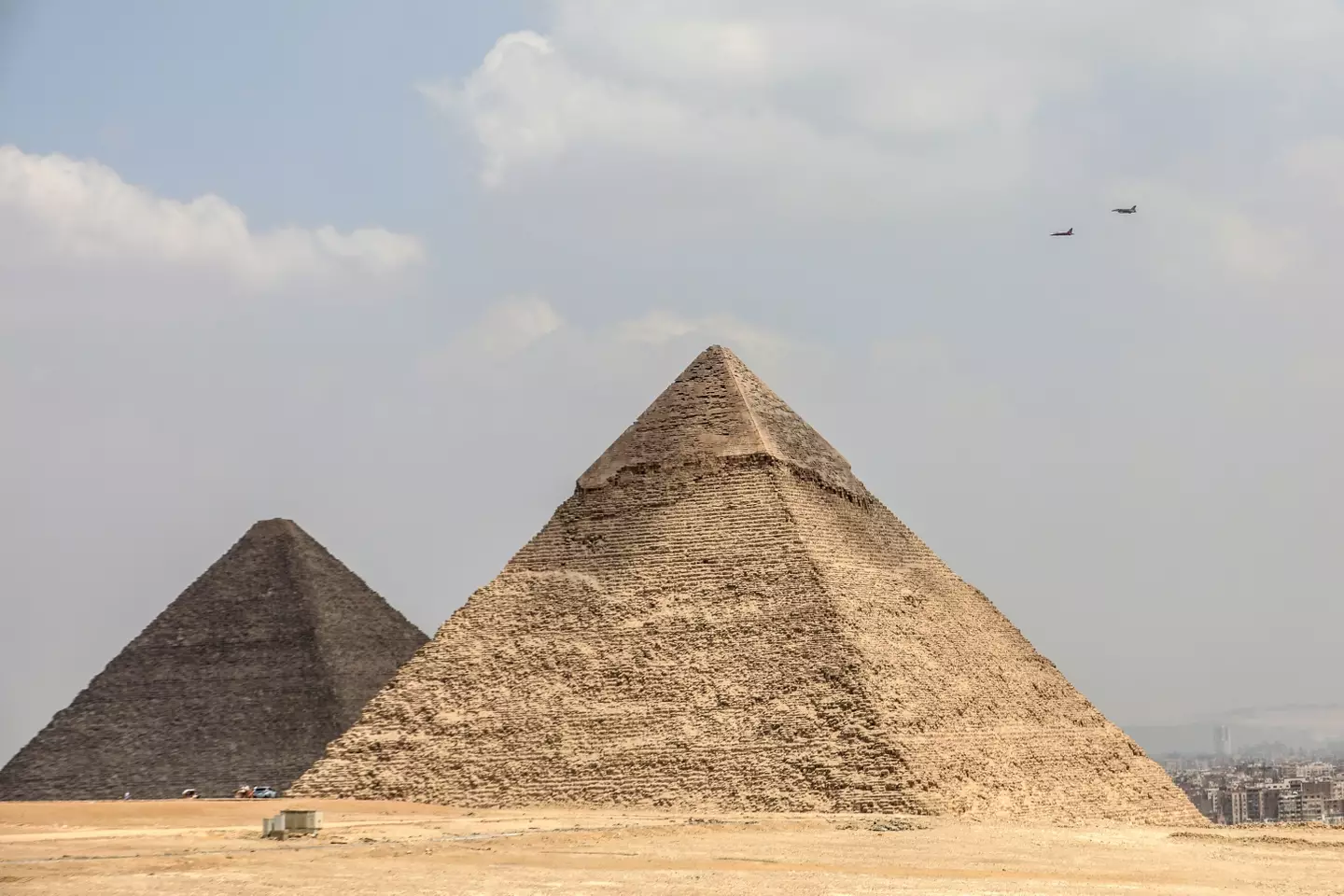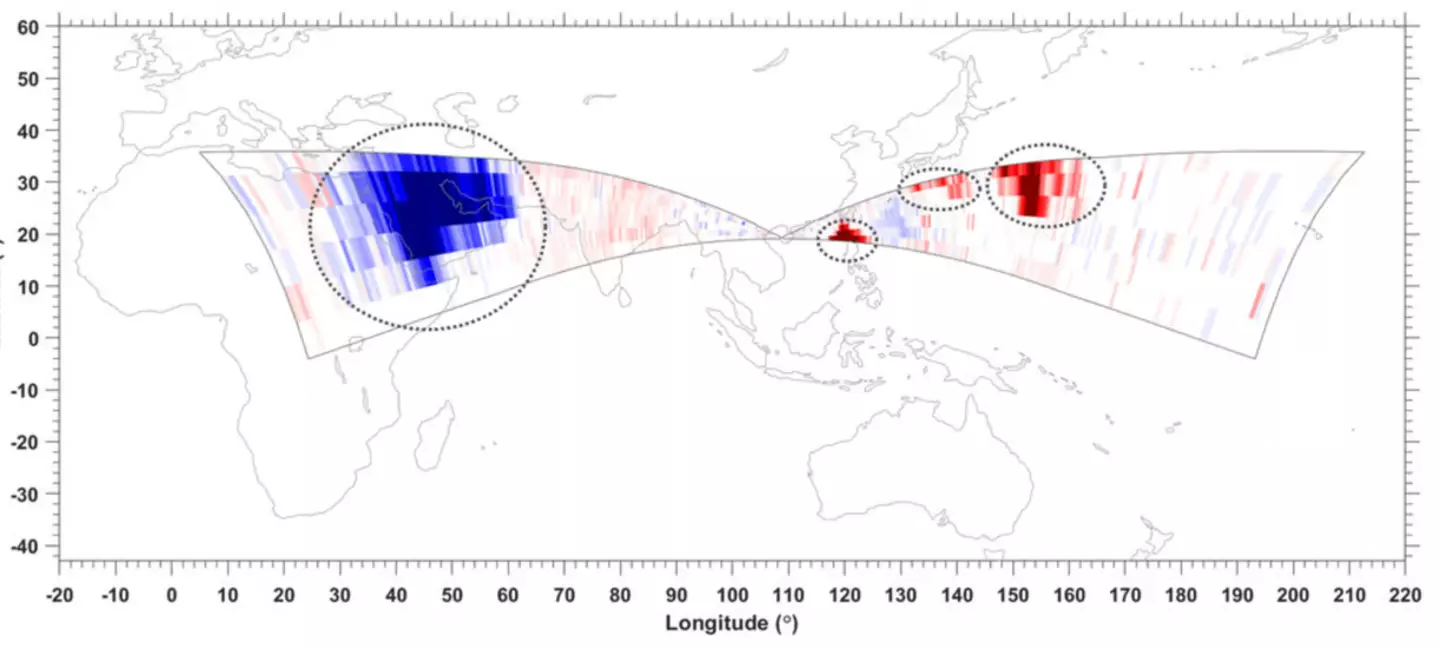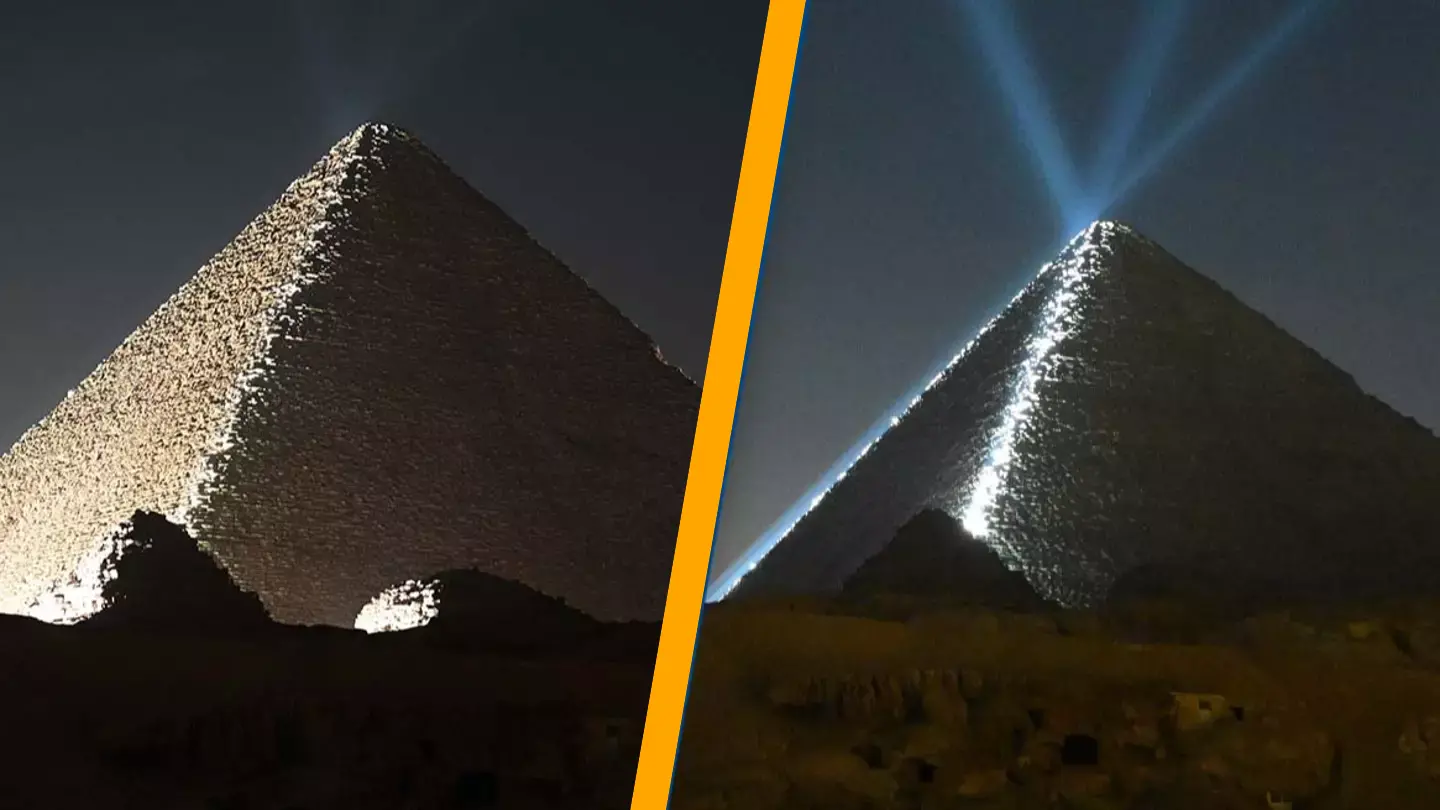Researchers in China have employed radar technology to detect unusual ‘bubbles’ above the pyramids in Egypt.
The pyramids have long been enigmatic, spurring numerous questions and theories about their construction and the secrets they hold within.
The mystery now extends to the airspace above these ancient structures, with scientists from the Chinese Academy of Sciences recently unveiling their findings.

Utilizing the LARID radar, a low-latitude long-range ionospheric radar, the researchers identified equatorial plasma bubbles (EPBs) over the pyramids.
These EPBs are pockets of heated gas that form in the upper atmosphere at low latitudes.
In early November 2023, a solar storm generated these plasma bubbles, which were detectable by China’s radar system from as far away as North Africa and the central Pacific.
These measurements enabled scientists to observe the bubbles’ movements in real-time.
EPBs can expand to hundreds of kilometers in width. While they are relatively common, much remains unknown about them, including their potential to disrupt GPS signals and interfere with satellite communications.
Typically, EPBs are observed from space, providing a global perspective. Ground-based observations are possible but challenging due to the curvature of the Earth, which limits radar’s ability to detect below the horizon.

This particular observation of EPBs is remarkable because it was made from 4,970 miles away.
China’s radar system can monitor irregularities caused by plasma bubbles by analyzing signals reflected from the ionosphere’s plasma.
The detection from Egypt marks China as the first nation capable of identifying EPBs via radar.
The radar can detect signals from up to 5,965 miles away, and researchers propose that establishing a network of similar radars could revolutionize the monitoring of these occurrences.
Publishing their findings in Geophysical Research Letters, the authors stated: “The results provide meaningful insight for building a low latitude OTH [Over-The-Horizon] radar network in future, that consists of three to four OTH radars [and] could have the capability to obtain global EPBs in real time.”
By tracking EPBs, scientists could potentially forecast their location, size, and timing, thereby mitigating their disruptive effects on satellites.

